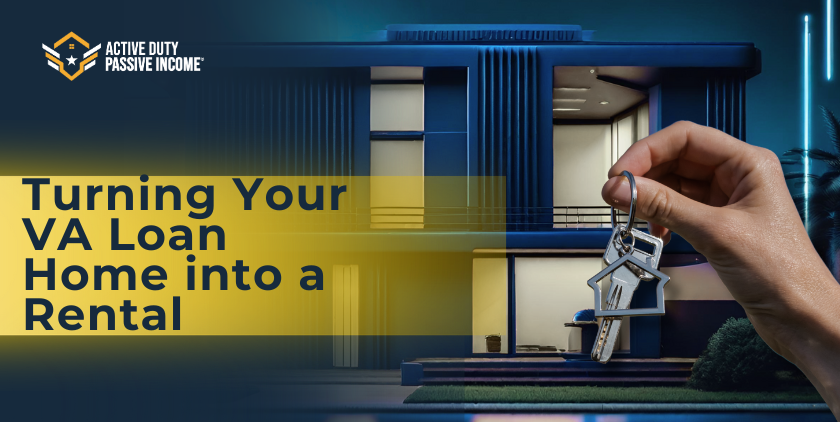Transform your VA loan home into a lucrative rental property with our comprehensive, step-by-step guide.
Transitioning your primary residence, especially one financed through a VA loan, into a rental property can be a financially savvy move. However, it involves careful planning and adherence to specific guidelines. This comprehensive guide will walk you through the essential steps, considerations, and benefits of converting your VA-financed home into a rental property.
Understanding VA Loans
What is a VA Loan?
A VA loan is a mortgage option available to veterans, active-duty service members, and some surviving spouses. It is backed by the U.S. Department of Veterans Affairs and offers several advantages, such as:
- No down payment requirement
- Competitive interest rates
- No private mortgage insurance (PMI)
- Flexible credit requirements
These benefits make VA loans an attractive option for eligible individuals looking to purchase a primary residence.
Primary Residence Requirement
VA loans are intended for primary residences. This means the home must be occupied by the borrower as their primary residence within a reasonable time after closing. Typically, this timeframe is within 60 days of loan closing, though exceptions can be made for certain circumstances.
Legal and Financial Considerations
Occupancy Requirements
The VA’s primary residence requirement stipulates that the home must be occupied by the borrower as their principal residence. To convert the home into a rental property, you must first meet this occupancy requirement. Generally, you should have lived in the home for at least 12 months before converting it to a rental property.
Loan Terms and Conditions
Review your loan documents to understand any specific terms and conditions related to renting out your property. Some lenders might have additional stipulations, so it’s crucial to be aware of these before proceeding.
Refinance Options
If you plan to convert your home to a rental property, you might consider refinancing. VA Streamline Refinance (IRRRL) or a conventional refinance can potentially lower your interest rate or change your loan terms, making the property more profitable as a rental.
Insurance and Tax Implications
When converting your home to a rental, you must update your homeowner’s insurance policy to a landlord or rental dwelling policy. Additionally, understand the tax implications, such as reporting rental income and potential deductions for expenses related to the rental property.
Steps to Convert Your VA-Financed Home into a Rental Property
Step 1: Assess Market Conditions
Before converting your home into a rental, assess the local rental market. Determine rental rates, demand, and competition in your area. This will help you set a competitive rental price and understand potential income.
Step 2: Notify Your Lender
Inform your lender about your intention to convert the property into a rental. This is essential as it ensures compliance with the loan terms and avoids any potential issues.
Step 3: Update Insurance Coverage
Contact your insurance provider to update your policy from a homeowner’s policy to a landlord policy. This type of insurance covers the unique risks associated with rental properties, including liability and property damage.
Step 4: Prepare the Property
Ensure the property is in good condition before renting it out. This might involve:
- Making necessary repairs
- Conducting a thorough cleaning
- Enhancing curb appeal
- Ensuring all systems (plumbing, electrical, HVAC) are functioning properly
Step 5: Set a Competitive Rental Rate
Determine a competitive rental rate by researching comparable rental properties in your area. Consider factors such as location, size, amenities, and condition of the property.
Step 6: Market Your Property
Advertise your property through various channels, including online rental platforms, social media, and local classifieds. High-quality photos and detailed descriptions can attract potential tenants.
Step 7: Screen Potential Tenants
Thoroughly screen potential tenants to ensure they are reliable and financially stable. This process typically involves:
- Conducting background checks
- Verifying employment and income
- Checking rental history and references
Step 8: Draft a Lease Agreement
Prepare a comprehensive lease agreement that outlines the terms and conditions of the rental arrangement. Include details such as rent amount, due date, security deposit, maintenance responsibilities, and lease duration.
Step 9: Manage the Property
Once the property is rented, effective management is crucial. This includes:
- Collecting rent on time
- Addressing maintenance issues promptly
- Conducting regular inspections
- Ensuring compliance with local rental laws and regulations
Benefits of Converting Your VA-Financed Home into a Rental Property
Generate Passive Income
Renting out your property can provide a steady stream of passive income. This income can be used to cover mortgage payments, property maintenance, and other expenses.
Build Equity
As your tenants pay rent, you continue to build equity in the property. Over time, this can result in significant financial gains, especially if the property appreciates in value.
Tax Advantages
Rental property owners can benefit from various tax deductions, including:
- Mortgage interest
- Property taxes
- Repairs and maintenance
- Depreciation
- Property management fees
Diversify Your Investment Portfolio
Real estate can be a valuable addition to your investment portfolio, providing diversification and potential long-term appreciation.
Leverage VA Loan Benefits Again
By converting your current home into a rental property, you free up your VA loan entitlement. This allows you to use your VA loan benefits again to purchase another primary residence.
Challenges and How to Overcome Them
Finding Reliable Tenants
One of the biggest challenges of being a landlord is finding reliable tenants. Mitigate this risk by conducting thorough background checks and verifying tenant information.
Property Maintenance
Maintaining a rental property can be time-consuming and costly. Consider hiring a property management company to handle maintenance tasks and tenant relations.
Legal and Regulatory Compliance
Stay informed about local rental laws and regulations to ensure compliance. This includes understanding tenant rights, lease requirements, and fair housing laws.
Financial Management
Effective financial management is essential for rental property success. Keep detailed records of income and expenses, and set aside funds for unexpected repairs and vacancies.
Case Study: Successfully Converting a VA-Financed Home into a Rental Property
Background
John, a veteran, purchased a home using a VA loan in 2018. After living in the home for three years, he received a job offer in another state. Rather than selling the property, John decided to convert it into a rental.
Steps Taken
- Market Analysis: John researched the local rental market and determined a competitive rental rate for his property.
- Notification: He informed his lender about his intention to convert the property into a rental.
- Insurance Update: John updated his homeowner’s insurance policy to a landlord policy.
- Property Preparation: He made necessary repairs and improvements to make the property attractive to potential tenants.
- Marketing: John advertised the property on various online platforms and social media.
- Tenant Screening: He conducted thorough background checks and selected reliable tenants.
- Lease Agreement: John drafted a comprehensive lease agreement outlining the terms of the rental.
- Property Management: He chose to manage the property himself, addressing maintenance issues and collecting rent.
Results
John successfully rented out his property within a month and started receiving a steady stream of rental income. This income helped cover his mortgage payments and maintenance costs. Over time, John built significant equity in the property and benefited from various tax deductions.
Conclusion
Converting a primary residence financed with a VA loan into a rental property can be a lucrative endeavor, providing passive income, building equity, and offering tax advantages. However, it requires careful planning, understanding of legal and financial implications, and effective property management.
By following the steps outlined in this guide and staying informed about rental market trends and regulations, you can successfully transition your VA-financed home into a profitable rental property. Whether you’re a veteran or an active-duty service member, leveraging your VA loan benefits to build a real estate portfolio can be a smart financial move.
FAQs
Can I rent out my home immediately after purchasing it with a VA loan?
Generally, the VA requires you to occupy the home as your primary residence within a reasonable time after closing. It’s advisable to live in the home for at least 12 months before converting it to a rental property.
Do I need to refinance my VA loan to convert my home into a rental property?
Refinancing is not required, but it can be beneficial. A VA Streamline Refinance (IRRRL) or a conventional refinance might offer better loan terms, making the property more profitable as a rental.
What type of insurance do I need for a rental property?
You need a landlord insurance policy, which covers the unique risks associated with rental properties, including liability and property damage.
How do I determine the rental rate for my property?
Research comparable rental properties in your area to determine a competitive rental rate. Consider factors such as location, size, amenities, and property condition.
What are the tax implications of renting out my VA-financed home?
Rental income is taxable, but you can deduct various expenses, such as mortgage interest, property taxes, repairs, maintenance, and depreciation. Consult a tax professional for detailed advice.
By thoroughly understanding the process and taking the necessary steps, you can successfully convert your VA-financed home into a rental property and enjoy the financial benefits it brings.









